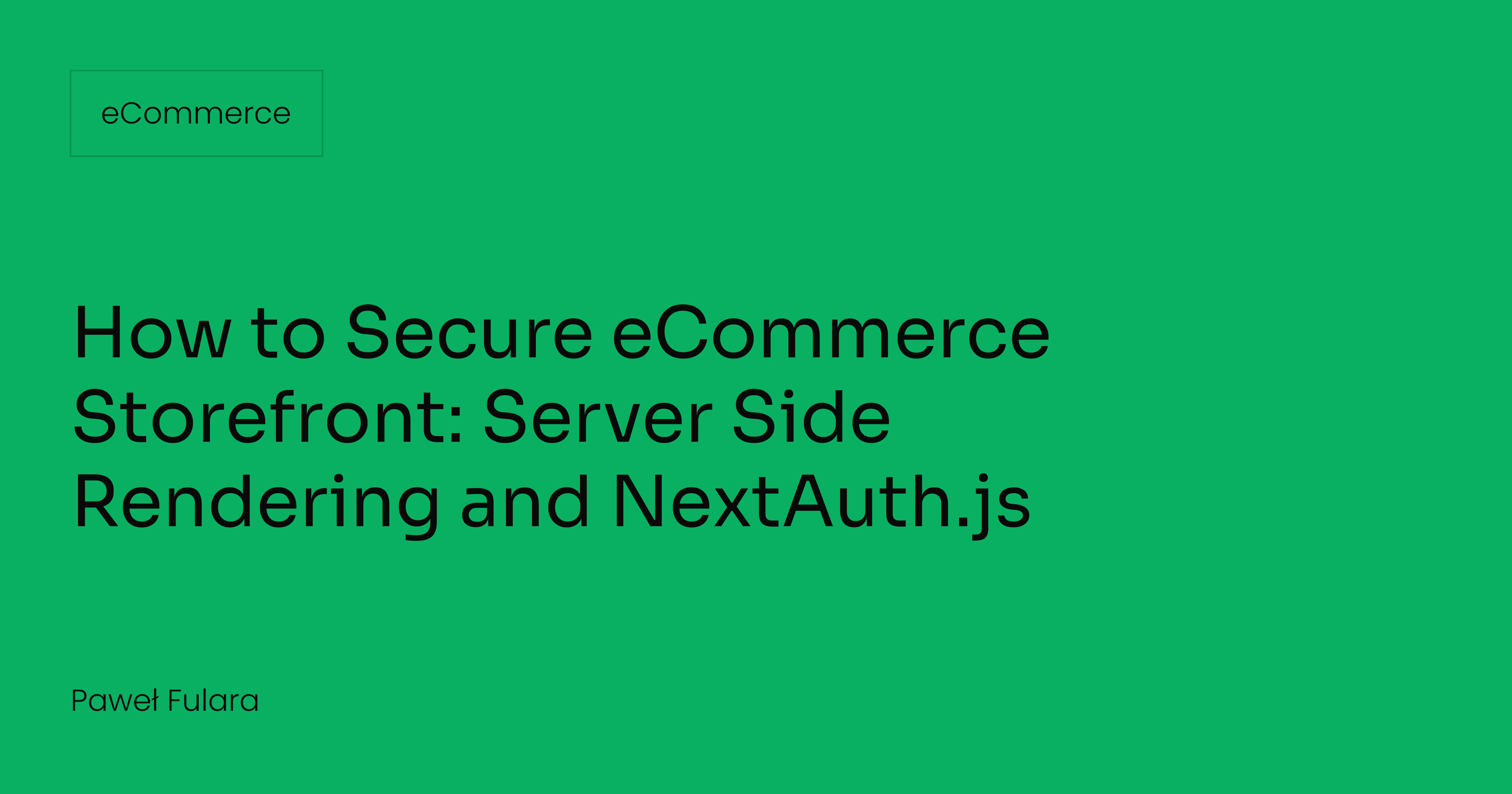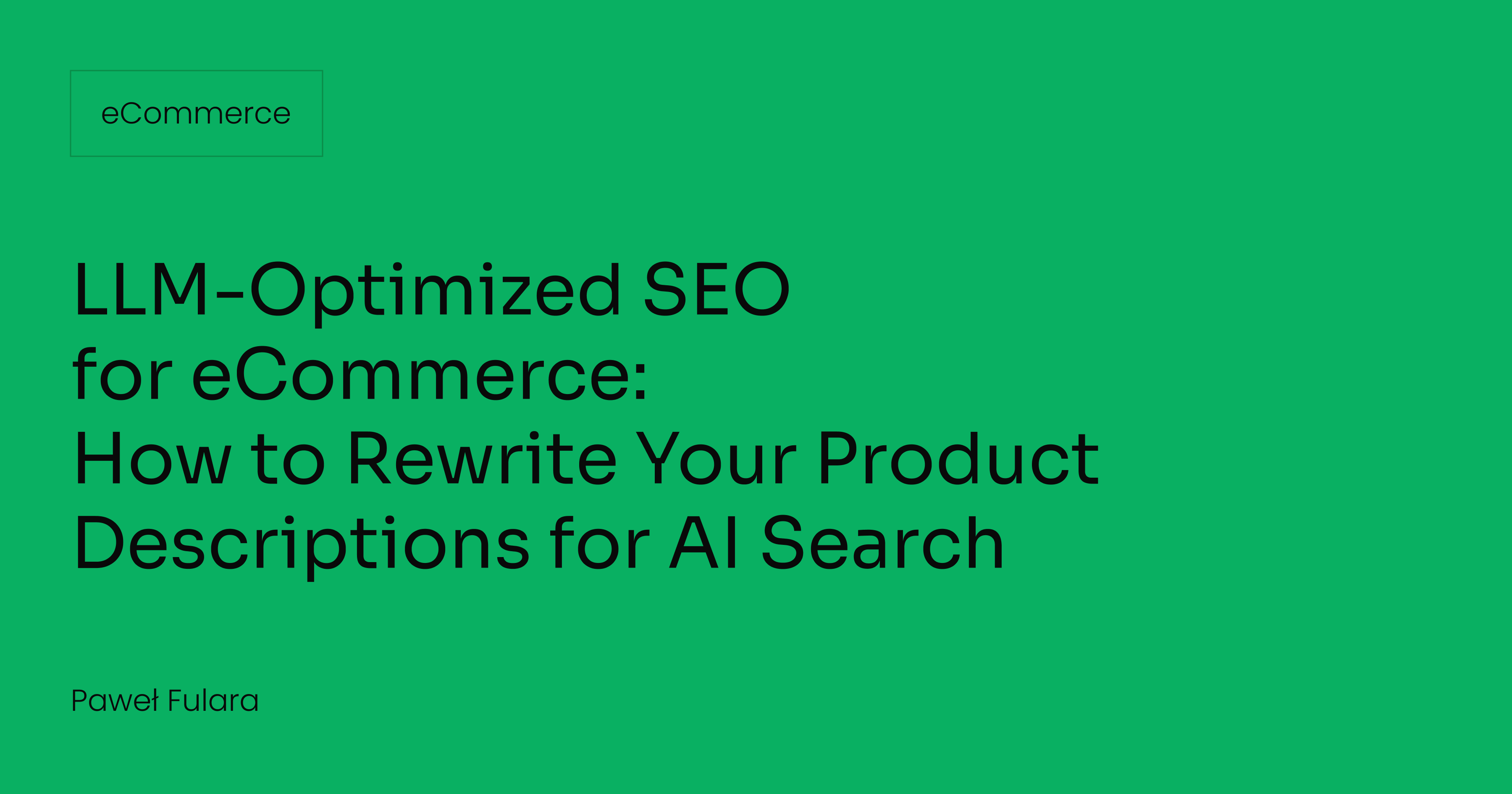Let’s talk about how we can build your commerce project — tailored to your business, powered by Rigby
Introduction of innovative solutions in online sales can bring many benefits both for sellers and buyers. One of the more interesting solutions is headless e-commerce, which is considered by many to be the technology of the future. Is it really so?
What is headless e-commerce?
The e-commerce industry has been developing rapidly over the last few years. Buying products is no longer limited to just the website of a particular store. The possibility of reaching customers now exists through email or social media, opening up new horizons and making even more consumers want to shop. To ensure a continuous increase in sales levels, it is necessary to implement solutions that facilitate the customer's choice of interesting products and the payment process.
To explain what headless e-commerce is exactly, we need to start with discussing three key elements of any website:
- Front-end - you could say that the front-end plays a primary role. This layer is responsible for the user interface. The front-end is everything that the user sees first.
- Back-end - this is where the website is managed and changes are made to it.
- Database - this is where all the most important information regarding product descriptions, photos, or graphics is stored.
Headless e-commerce is revolutionary software that is able to separate the front-end from the back-end. This gives developers a lot of room to maneuver. Modifications to individual layers can be made independently, which is very comfortable. It is worth noting that in headless e-commerce, the front-end and back-end can be located on completely different servers. Furthermore, there is the possibility of using APIs, which makes work easier, as content can be sent directly to various channels such as a mobile application or the main page of an online store.
Until now, the e-commerce industry has combined front-end, back-end, and databases. However, this is slowly becoming obsolete, as customers expect innovative solutions that will make it easier for them to choose products and make purchases quickly.
Why is it worth investing in headless e-commerce?
Headless e-commerce is appreciated by developers because it significantly simplifies their work. One of the biggest advantages is the ability to create content for various platforms and publish it almost immediately. Headless e-commerce is perfectly suited to new solutions because it allows the selected platform to be connected to the front-end and developed according to one's own discretion. At this point, there is no need to worry about the back-end, as it is practically independent.
Headless e-commerce also makes it much easier to match data sources to specific content distribution channels. Opening a new sales point for a specific brand is no problem at all. Rapid implementation of changes or independent software updates are just examples of how well headless works.
For large companies, it is also a convenience in the form of independence. Everyone can perform their tasks in the online store, which will not affect the operation of other front and back-end areas. For example, a copywriter can create and publish content without worrying that there may be any changes in the store's appearance or operation.
At this point, it is worth looking at CMS systems that work with headless e-commerce. The most popular ones include:
● ContentStack● Strapi● GraphCMS● Ghost● Agility CMS● Magnolia
Headless e-commerce can also improve Google search results. Proper implementation of solutions related to the search of individual content will significantly reduce the loading time of the page. As we know, speed is one of the important elements responsible for website positioning.
Another advantage is security, as the front and back-end layers are separate from each other. This means that a potential hacker attack will not affect the entire website, but only individual elements. However, such a scenario is unlikely, as headless e-commerce allows for the introduction of various security measures.
Does headless e-commerce have any drawbacks?
Although headless e-commerce can be considered an excellent solution, it still has some drawbacks. First and foremost, experienced developers are required to work on this project. A layperson will not be able to handle making changes and managing certain APIs, which in turn generates costs. It is worth analyzing the balance of benefits and costs, although it cannot be denied that headless e-commerce brings significant benefits, which will certainly translate into financial results. A major drawback when managing content is that user-entered changes are not immediately visible. This option works perfectly in the popular WordPress website. In this case, this is a significant limitation, especially for content creators. Another disadvantage is the insufficient popularity of headless e-commerce. It is a technology that is still in its infancy and will only be fully developed in a few years. Many platforms do not support headless, so it is worth remembering when deciding to implement it.
Which industries is headless e-commerce the best choice for?
In reality, headless e-commerce is a suitable choice for large companies as well as online store owners based on more than one platform. Headless, thanks to its API integration, facilitates integration with applications or sales platforms. This technology has practically no limitations, and that is its great strength. Headless will work well in optimizing mobile applications. This is particularly relevant to enhancing user-experience. Competition is constantly vigilant, so if you want to be a leader in your industry, it is worth looking into headless e-commerce now. Sooner or later, this will bring tangible benefits!
Companies such as Amazon, Nike, Castorama, and Bosch are already using headless e-commerce. Over time, more and more brands will switch to this model. The front end can operate all the time and be available to customers. At the same time, developers can work on the back-end layer and introduce their modifications.
To sum up
While reading about headless e-commerce, you will certainly come across the statement that this is the technology of the future. Is this true in reality? Definitely yes! The e-commerce industry needs new solutions to attract customers and, above all, to make shopping easy and enjoyable for them. New solutions based on APIs enable personalization according to needs. Implementing new brands on the market will no longer be as troublesome as before. Based on headless e-commerce, opening a new online store will take much less time.
Another huge advantage is the easy distribution of content across different platforms. Everything can be done from one place, and that's a huge advantage! Finally, a few words need to be said about programmers and those who run the online store. Headless e-commerce is also a great help for them because the front-end is separated from the back-end. It can be said that everyone is responsible for their area and does not affect what others are doing. In case of any errors or difficulties, it is a great relief that will not lead to a complete stoppage of the website.
Of course, it should be realized that implementing headless e-commerce requires time and money. Hiring specialized programmers is necessary, and the success of the entire project really depends on them. Initially, you have to invest in this project, but the benefits it brings make the profits bring a return on investment and allow you to earn even more than before. Headless e-commerce is the future for every industry operating on the internet!











